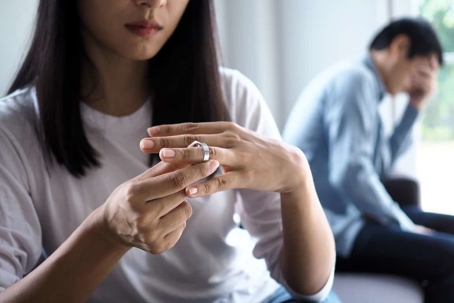A divorce is an extremely emotional process. When a marriage breaks down, it means a loss of identity and purpose, not to mention the effect it can have on children and other family members. Because divorce is so impactful, with the decisions that are made in its wake having long-term effects on everyone involved, the court system in Florida has spent years tracking and deliberating on how it applies the law to any decision it makes.
While the law is designed to be free of bias and ensure that both spouses are treated fairly in a divorce, there is still the prevailing notion that courts show a bias toward women when rendering their decisions. In looking at how divorce law applies in Florida and the existing factors that go into a decision, it may be easier to understand where this bias comes from–and if it even exists.
Contact Robert Sparks Attorneys Today
Going through a divorce, no matter what side you’re on, is an extremely emotional and taxing process. In these situations, it’s important to have the experience and knowledge of a Florida divorce attorney to protect your interests and make sure you’re treated fairly.
At Robert Sparks Attorneys, we have a team of such attorneys that can provide you with the legal and emotional support you need to navigate this difficult time. If you are going through a divorce or believe you may be in the near future, today to set up a free, initial consultation.
What Do Divorce Statistics Tell Us About Men and Women?
While divorce law in Florida–and nationwide–is designed to treat every instance fairly, the reality is that the law is applied by courts that are ultimately human. Thus, while they make every effort to make impartial decisions, the nature of a divorce means one party will likely feel slighted once the final decision is made.
In looking at the statistics on divorce, it provides a picture of how both men and women are affected:
- According to a 2015 study by the American Sociological Association, women initiate 69% of all divorces in the United States.
- A 2020 report from the U.S. Government Accountability Office (GAO), women are more likely to experience financial hardship after a divorce. A woman’s household income decreased by 41% after divorce, while men’s income decreased by only 23%.
- According to the Centers for Disease Control and Prevention (CDC), the divorce rate in Florida was 3.6 per 1,000 people in 2019, which is slightly higher than the national average of 2.7 per 1,000 people. In 2019, there were 66,834 divorces in Florida.
While these statistics underlie the prevalence and raw numbers behind the divorce, it’s often the emotional side of a divorce that most often leads to claims of bias. While divorce is usually emotionally charged, especially when there are significant assets up for grabs, it may be helpful to look at how the law is applied in Florida before determining whether or not a bias exists.
Florida Divorce Law
Under the law in Florida, divorce is a sometimes necessary step for a broken marriage. Florida is a “no-fault” divorce state, which means that either side can initiate a divorce without providing a stated reason. The only legal requirement for a divorce to be initiated in Florida is the marriage being “irretrievably broken.”
As for assets, Florida is an “equitable distribution” state. This means that the marital assets are divided in a way that is considered to be fair, but not necessarily equal. Thus, when assets like the marital home and matters like child custody or alimony are to be divided up, courts will consider a number of different factors when making their decision. Among these factors include:
- Length of the marriage
- The contribution of each spouse to the marriage
- The economic circumstances of each spouse
- Standard of living established during the marriage
- The financial resources of each spouse
- The earning capacity of each spouse
- The number of children
- The children’s relationship with each parent
- The ability of each parent to provide for the child’s needs
- The mental and physical health of each parent
- The child’s preference (if the child is old enough to express a preference)
Ultimately, every divorce case is unique, with the decisions made relying on the circumstances and factors that the court is presented with. In cases of Florida divorce, it’s difficult to pin down whether or not courts show a bias because every case is different.
Do Florida Courts Show a Bias Toward Women in a Divorce?
While it’s true that women statistically initiate more divorces than men, whether or not a Florida court show bias toward a woman is extremely difficult to determine. Moreover, there is no evidence to suggest that Florida courts show bias to women during a divorce. In fact, the Florida family law system is designed to ensure that both spouses are treated fairly and equitably, and is gender-neutral.
Part of the reason for this perceived bias may have to do with the fact that women have historically been disadvantaged in divorce cases due to gender stereotypes and social norms. However, this is not reflective of the current state of the law in Florida.
The court’s primary concern is to ensure that the divorce proceedings are fair and just for both parties involved, regardless of their gender.
Work With Experienced Florida Divorce Attorneys
Going through a divorce is never easy, no matter how necessary it might be. At Robert Sparks Attorneys, we understand how emotional and difficult this process can be. That’s why we use our experience and knowledge to guide and support you. We have helped hundreds of Florida clients protect their interests in their divorce, and can make sure that you are treated fairly by your spouse or judge. To get started with a free consultation, today.

